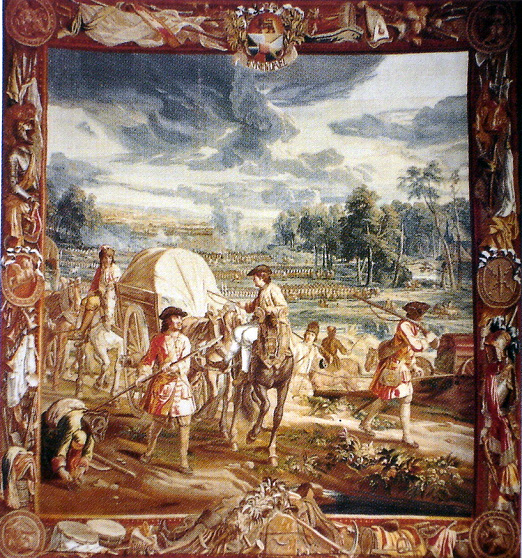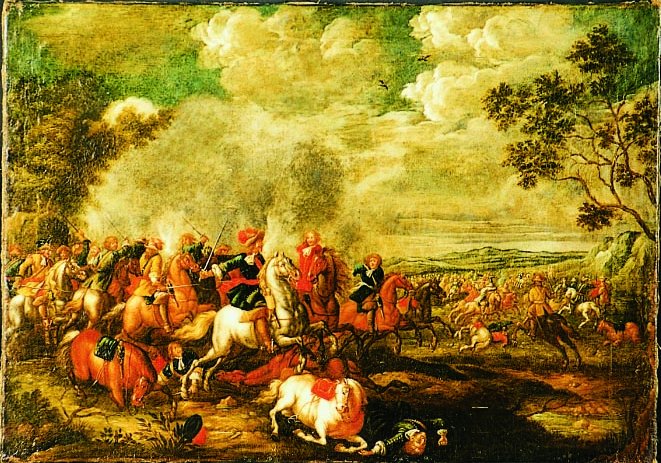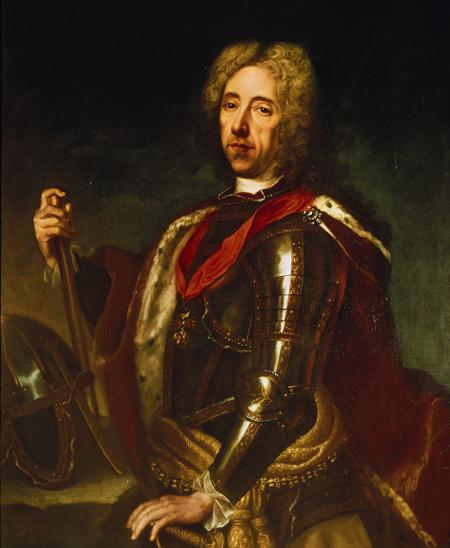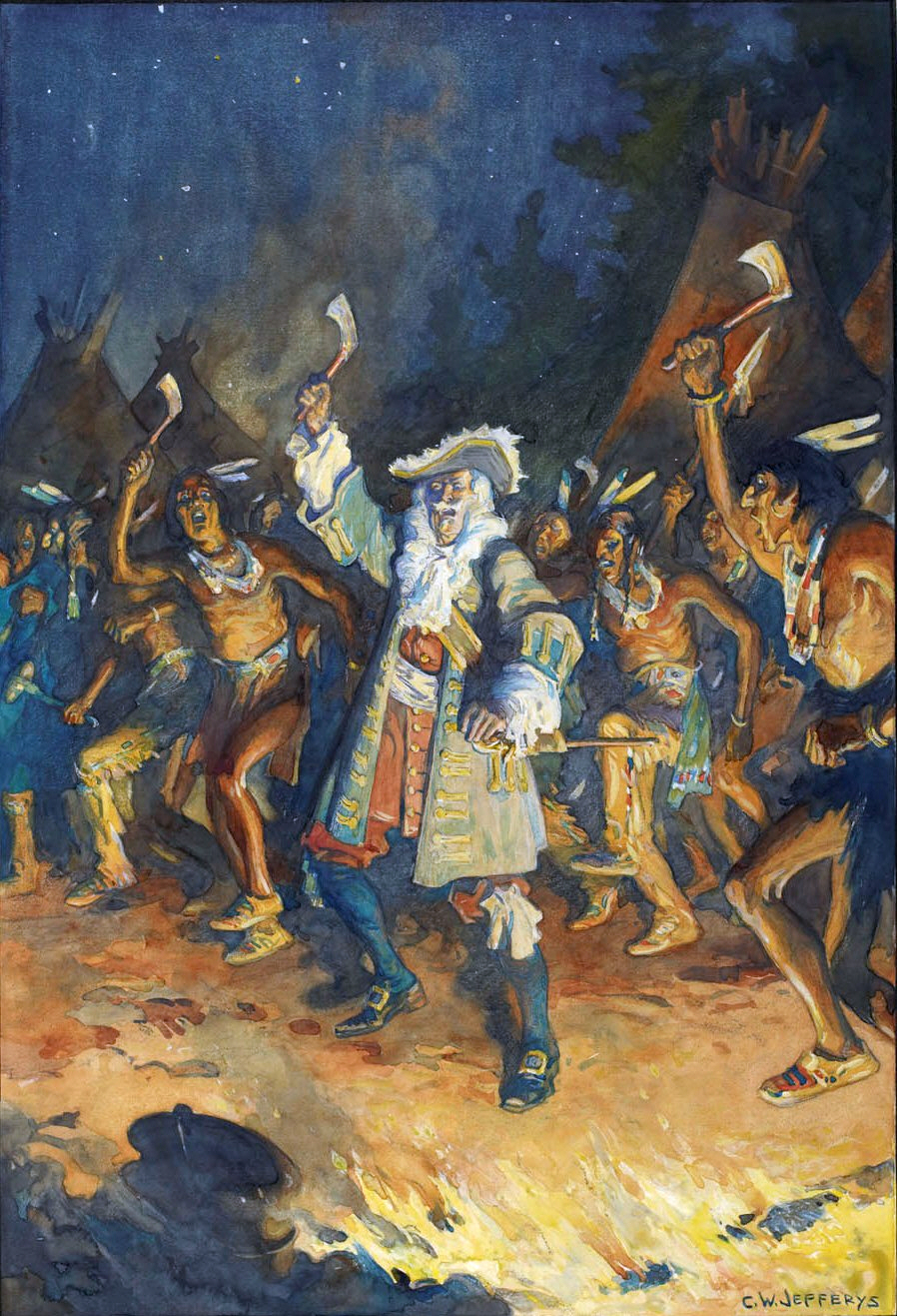So I am starting a timeline after hitting a major writer block in the last timeline and become intrest in late 1600's and 1700's. So this timeline is about a very different nine years war that has a Ireland completely controlled by James II, a invasion of England, and a unexpected death of a monarch. Please comment, all of your criticisms, suggestions, and various comments will help me write and engaging timeline and is encouraged and, Please enjoy.
The Fleur of the Roi
The great men and women of the past defined the history of the European continent, these people have changed very basis of the power in Europe and the world. There is no better example of this than Louis XIV of France often known as the Sun King. At the time of his death in 1692, France was at the height of its power, it dominated the seas, it’s army was beating back its enemies left right and centre and was in the midst of conflict that could secure French dominance. But his death of the his bloody wars of both him and his successor would send Europe violent and bloody Age of Revolution when revolutionary republics, and ambitious generals reshaped Europe in their image and in the name of liberty. But to figure out how went from the golden age of monarchies to the bloody and violent Age of Revolutions, we must look at Louis XIV most violent war and crucial war, and ultimately the one that claimed his life the Nine years war of the War of the League of Ansbach. (For proposes of the timeline I will skip ahead to our POD The Battle of Beachy Head)
The Battle of Beachy Head was the first major naval conflict in the war, and to say that it is decisive is to put it bluntly. The battle began on July 10 1690, though initially the battle was reluctant. Admiral Torrington forced by orders by the Admiral Russell to attack the French. Outnumbered has no desire to attack believing that an attack would mean the loss of the fleet, but not to attack would mean directly disobeying orders. So with much reluctance in his heart Admiral Torrington attacked, he divided his fleet into three squadrons in van was the Dutch admiral Cornelis Evertsen in the centre was himself and in the rear was Ralph Delaval. French divided in a similar way. The battle began with the Allies being windward, ran down together in line abreast, and elongated in order to cover French fleet. Evertsen bore down on the leading French squadron lead by Chateau-Renault, but left the leading division of the squadron unmarked. This division was able cut across Evertsen’s path and, doubling upon the Dutch Squadron inflicting heavy losses on the Dutch. The English vice admiral Ashby attempting to assist the Dutch, was cut off when Marquis de Villette succeeded in tacking ahead, placing Ashby between two fires. Ashby division was torn to shreds and Ashby was killed. Torrington tried to bring his squadron into help Ashby, pushed himself forward to attack the French van. Evertsen fought desperately but a cannon ball broke the mast on his ship and killed him. Upon realization of Evertsen’s death the fleet fled, or surrendered to the French (which ever was more practical). The French fleet turned around to face the Torrington the rear of Admiral Tourville fleet tacked just below Torrington’s Squadron. Torrington realizing that the battle was lost attempted to use the tide to escape but was killed by shrapnel before he could give the order. Admiral Delaval realizing what Torrington was trying to do order all of the English ships to lay their anchors. The French did not have time to react and British using the tide escaped. The battle had reach the decisive conclusion, The French had sunk up to 18 ships, had captured 5 Dutch ships, and killed two allied admirals. The British under the command of Delaval sailed back up the Thames being forced to scuttle 6 allied ships and return to London were he was relived of his command and replaced by Admiral Edward Russell, though the blame was not put on him but rather on Torrington for fighting the battle. But the King William had bigger things to attend to.
Upon hearing the news of victory James II ordered his troops to disengage the English and to head back to Limerick, to wait for the inevitable French reinforcements. William III now realized how likely an invasion of England was fled with half his army across the sea making it back in Wales in less than week just barley avoiding the French. James II realizing that he that he had the advantage over English turned around and attacked the English lead by Duke of Schomberg. The two forces clashed at The Battle of Boyne. Utilizing the terrain he had placed himself to defend the river Boyne, the aggressive Schomberg attacked, it was here that James launched a massive cavalry charge against Schomberg. The Duke was surrounded and killed without their leader the English routed. James III had scored a major victory, wiping out the English on Ireland and now fled Ireland firmly in his Control
On July 25, The French invasion force leaded by Marshal Victor-Marie d’Estrees, backed by now victorious an beloved Admiral Anne Hilarion de Tourville landed at Brighton, with an army that 20 000 strong. The invasion of England had begun

French invasion force marches through East Sussex
The Fleur of the Roi
The great men and women of the past defined the history of the European continent, these people have changed very basis of the power in Europe and the world. There is no better example of this than Louis XIV of France often known as the Sun King. At the time of his death in 1692, France was at the height of its power, it dominated the seas, it’s army was beating back its enemies left right and centre and was in the midst of conflict that could secure French dominance. But his death of the his bloody wars of both him and his successor would send Europe violent and bloody Age of Revolution when revolutionary republics, and ambitious generals reshaped Europe in their image and in the name of liberty. But to figure out how went from the golden age of monarchies to the bloody and violent Age of Revolutions, we must look at Louis XIV most violent war and crucial war, and ultimately the one that claimed his life the Nine years war of the War of the League of Ansbach. (For proposes of the timeline I will skip ahead to our POD The Battle of Beachy Head)
The Battle of Beachy Head was the first major naval conflict in the war, and to say that it is decisive is to put it bluntly. The battle began on July 10 1690, though initially the battle was reluctant. Admiral Torrington forced by orders by the Admiral Russell to attack the French. Outnumbered has no desire to attack believing that an attack would mean the loss of the fleet, but not to attack would mean directly disobeying orders. So with much reluctance in his heart Admiral Torrington attacked, he divided his fleet into three squadrons in van was the Dutch admiral Cornelis Evertsen in the centre was himself and in the rear was Ralph Delaval. French divided in a similar way. The battle began with the Allies being windward, ran down together in line abreast, and elongated in order to cover French fleet. Evertsen bore down on the leading French squadron lead by Chateau-Renault, but left the leading division of the squadron unmarked. This division was able cut across Evertsen’s path and, doubling upon the Dutch Squadron inflicting heavy losses on the Dutch. The English vice admiral Ashby attempting to assist the Dutch, was cut off when Marquis de Villette succeeded in tacking ahead, placing Ashby between two fires. Ashby division was torn to shreds and Ashby was killed. Torrington tried to bring his squadron into help Ashby, pushed himself forward to attack the French van. Evertsen fought desperately but a cannon ball broke the mast on his ship and killed him. Upon realization of Evertsen’s death the fleet fled, or surrendered to the French (which ever was more practical). The French fleet turned around to face the Torrington the rear of Admiral Tourville fleet tacked just below Torrington’s Squadron. Torrington realizing that the battle was lost attempted to use the tide to escape but was killed by shrapnel before he could give the order. Admiral Delaval realizing what Torrington was trying to do order all of the English ships to lay their anchors. The French did not have time to react and British using the tide escaped. The battle had reach the decisive conclusion, The French had sunk up to 18 ships, had captured 5 Dutch ships, and killed two allied admirals. The British under the command of Delaval sailed back up the Thames being forced to scuttle 6 allied ships and return to London were he was relived of his command and replaced by Admiral Edward Russell, though the blame was not put on him but rather on Torrington for fighting the battle. But the King William had bigger things to attend to.
Upon hearing the news of victory James II ordered his troops to disengage the English and to head back to Limerick, to wait for the inevitable French reinforcements. William III now realized how likely an invasion of England was fled with half his army across the sea making it back in Wales in less than week just barley avoiding the French. James II realizing that he that he had the advantage over English turned around and attacked the English lead by Duke of Schomberg. The two forces clashed at The Battle of Boyne. Utilizing the terrain he had placed himself to defend the river Boyne, the aggressive Schomberg attacked, it was here that James launched a massive cavalry charge against Schomberg. The Duke was surrounded and killed without their leader the English routed. James III had scored a major victory, wiping out the English on Ireland and now fled Ireland firmly in his Control
On July 25, The French invasion force leaded by Marshal Victor-Marie d’Estrees, backed by now victorious an beloved Admiral Anne Hilarion de Tourville landed at Brighton, with an army that 20 000 strong. The invasion of England had begun

French invasion force marches through East Sussex





